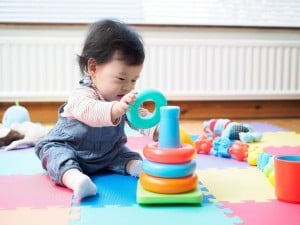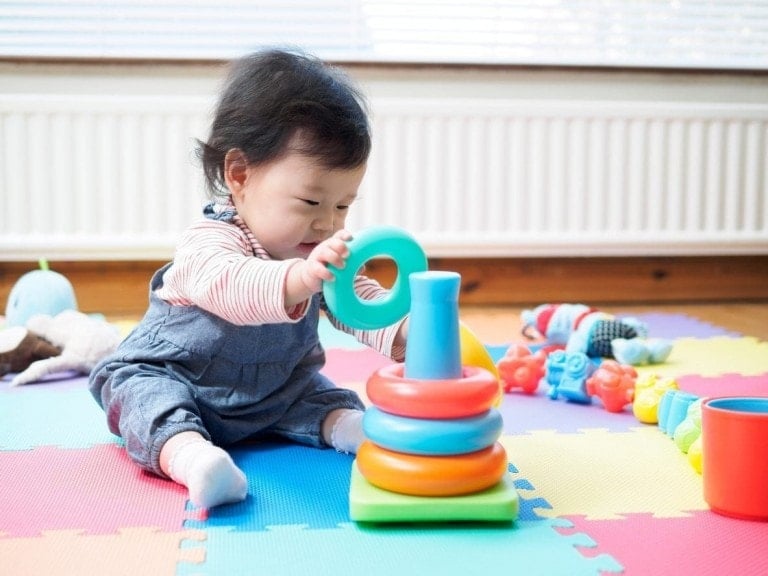Every newborn care class will teach you several essential parenting tips to help you get through parenthood. Bathing your baby, burping your baby, diapering your baby, and swaddling your baby—to name a few. If you cannot attend prenatal and newborn care classes but still want to know how to swaddle your baby, you’ve come to the right place!
People have only been swaddling babies for centuries. The oldest archaeological evidence of mothers swaddling their babies begins in 4000 B.C.1,2,3 with the migrating peoples of ancient central Asia. The ancient Greeks and Romans swaddled. There are even biblical references to the practice. But why are all of these mothers swaddling their babies?
Benefits of Swaddling
Swaddling offers more than just comfort. It can help your baby sleep better, startle less, and feel calm, safe, and secure in those early weeks.
1. Soothes Your Baby
If you aren’t familiar with pediatrician Dr. Harvey Karp and his wildly popular baby care book and video, The Happiest Baby on the Block, you should be. He talks about how to soothe your baby with the Five S’s. One of those S’s is Swaddling. He explains that swaddling triggers a “relaxation” mechanism in infants that helps soothe and lull them to sleep. This is why so many parents try swaddling. If something can help calm their child, they will do it. Research has shown that swaddling can decrease crying by 42% in infants 7 weeks or younger.4 So if your baby is overtired, overstimulated, or just fussy, swaddling him can help.
2. Better Night’s Sleep
Being swaddled is a familiar feeling for babies. It recreates the secure and cozy feeling of being inside the womb. While a newborn sleeps about 16 hours per day (in 3- to 4-hour increments), recreating a womb-like environment can help increase the amount of REM (rapid eye movement) sleep newborns get within those hours. This REM sleep is a deeper sleep state that makes it less likely for a baby to fully awaken when startled. Being swaddled prevents spontaneous movements called moro or startle reflexes from waking up, baby. His arms are tucked in the blanket, helping baby continue in his REM sleep cycle when the startle reflex occurs. All this means fewer trips for you to be with baby and a much more peaceful night’s sleep.
3. Reduce the Risk of Sudden Infant Death Syndrome (SIDS)
Studies have shown that babies who sleep on their stomachs are at higher risk of SIDS.5 This is why the “Back to Sleep” campaign started encouraging parents to put their babies on their backs. When you swaddle your newborn with his face up, your baby will be less likely to fidget, shift in sleep, and accidentally end up on his tummy.
4. Touch Therapy
Some touch therapists say swaddling can help develop an infant’s tactile system so they become comfortable with being touched, which is key to healthy development.6
All of these benefits explain why it’s a good idea to know how to make a nice, snug swaddle for your baby. The cozy wrapping allows your child to feel safe and secure. Here is a step-by-step guide to swaddling your baby.
How to Swaddle a Baby
Here’s how to swaddle your baby using the DUDU method from The Happiest Baby on the Block. It’s a simple, effective technique parents love.
Start with a Folded Diamond
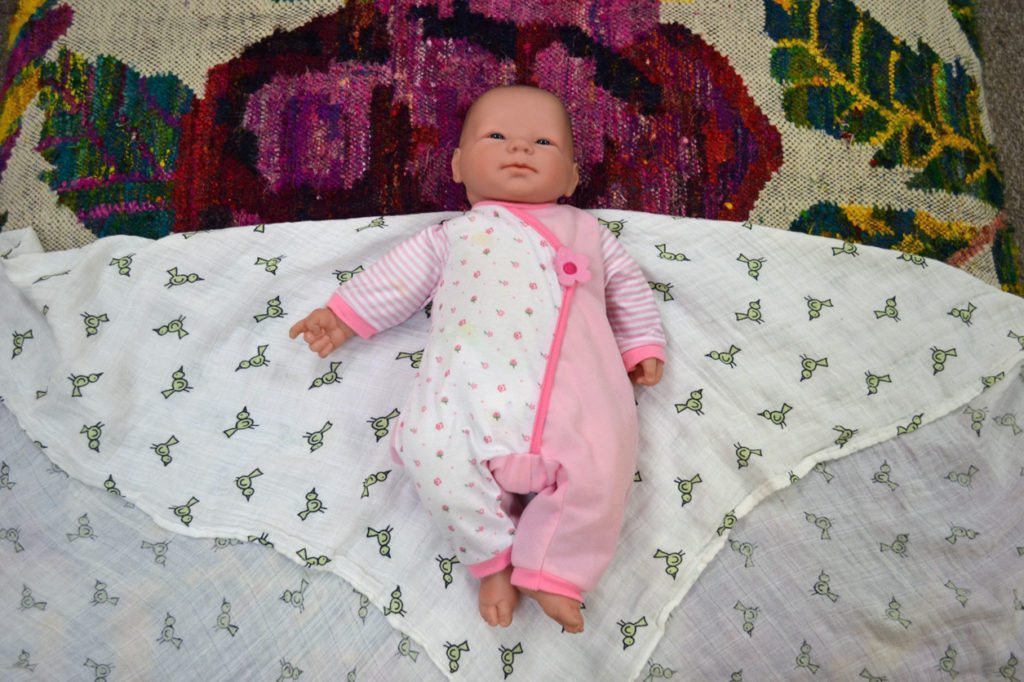
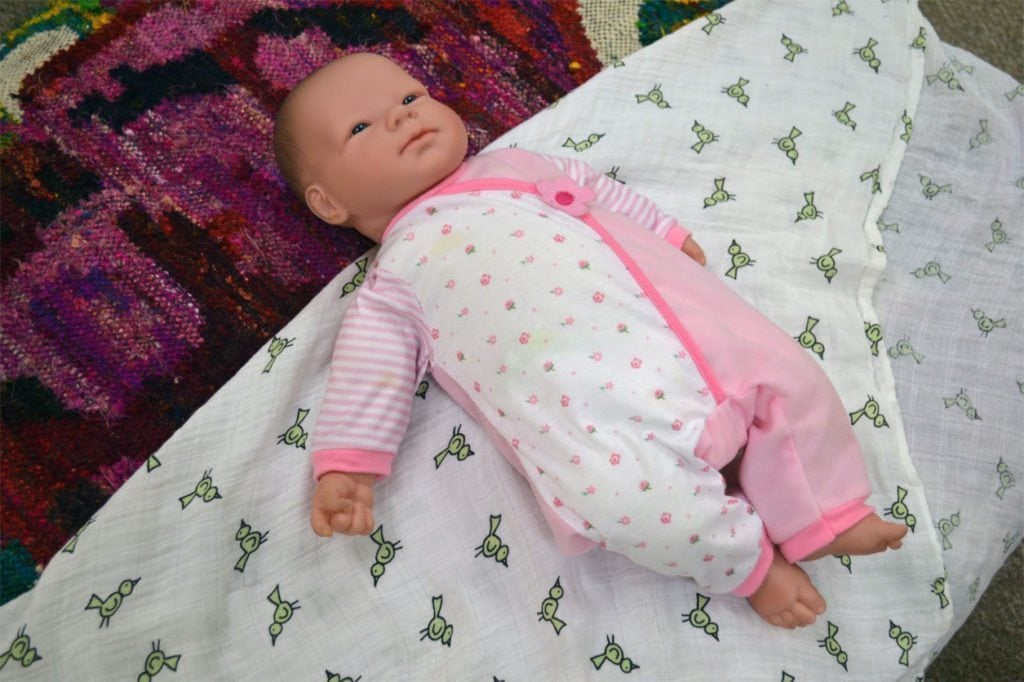
Lay a swaddling blanket or a muslin blanket on a flat surface. Position the blanket like a diamond with a corner at the top, left and right, and a corner at the bottom. Fold down the top corner partially. Place your baby on his back in the center of the blanket with his neck on the fold. His shoulders should be just below the fold.
Tuck the Right Side First
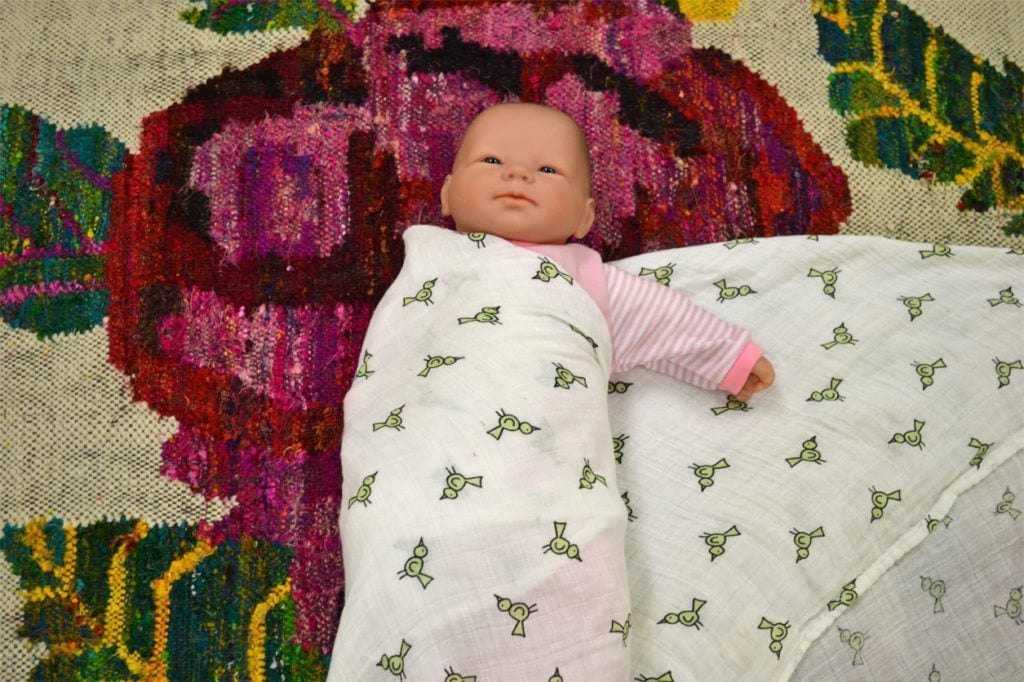
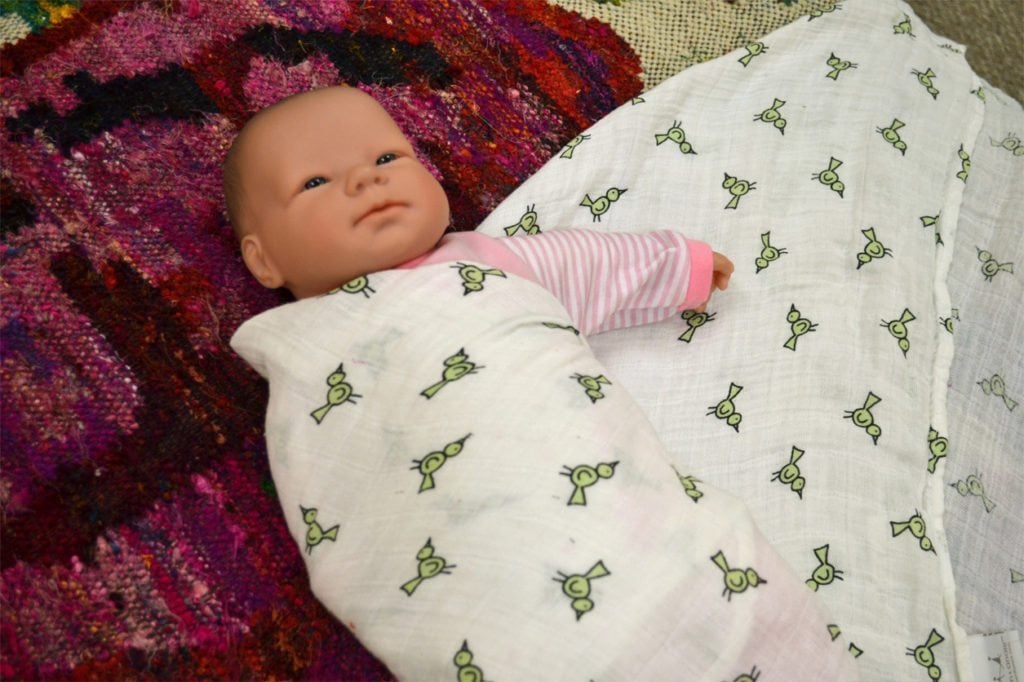
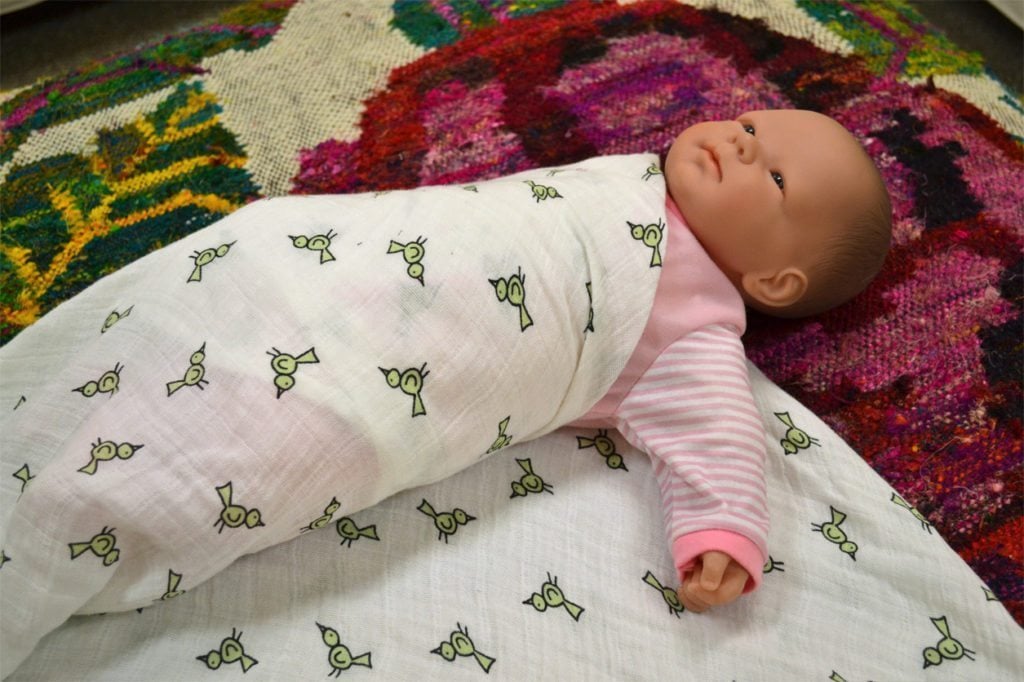
Hold your baby’s right arm down alongside the body, slightly bent. Pull the left corner of the blanket over his right arm and across his chest and body. Then tuck the fabric under his left arm and roll him to your left to wrap whatever remains under his back. Tuck it in securely while ensuring your baby can still bend his hips up and outwards. Leave the left arm free.
Do the Up-And-Around Tuck
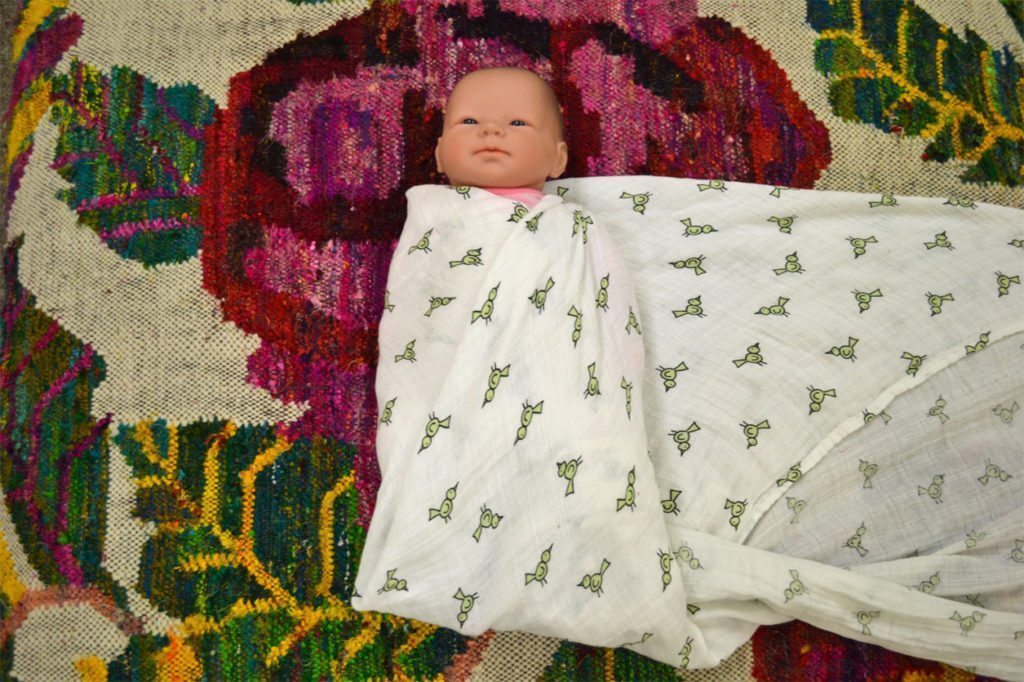
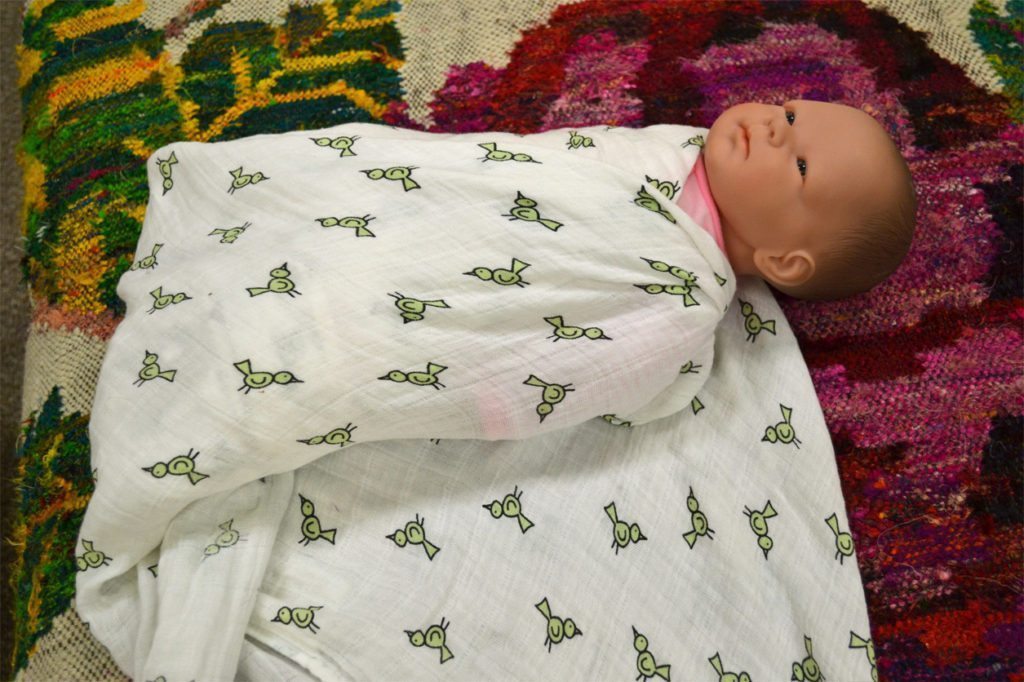
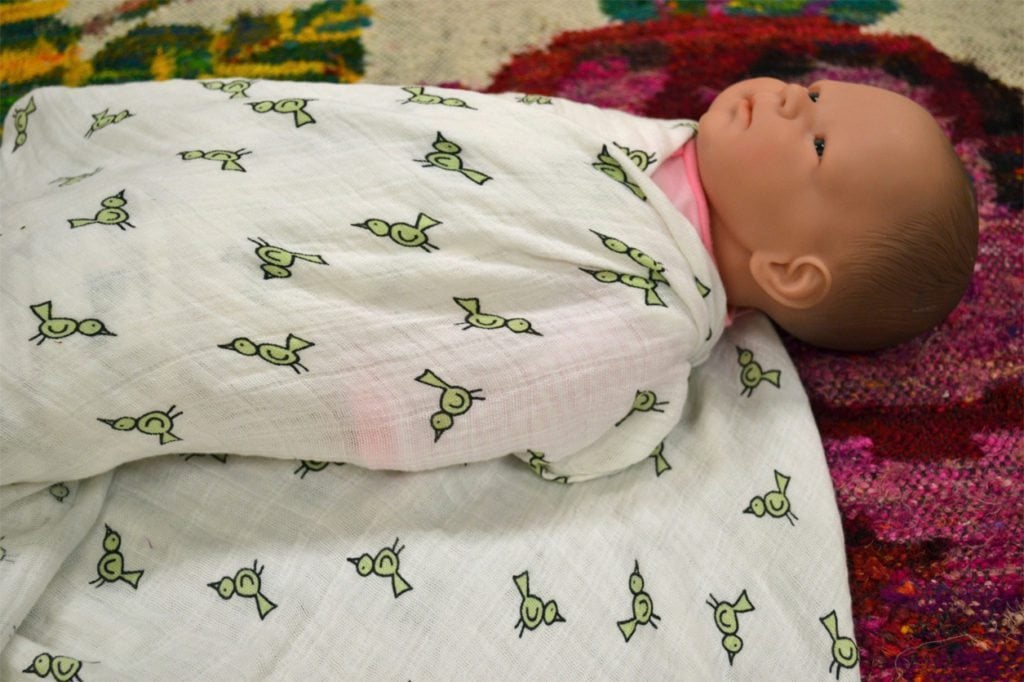
Hold your baby’s left arm down and pull the bottom corner of the swaddle up over baby’s feet and left shoulder. Tuck the point of the fabric into the top of the swaddle and tuck any extra material around his left arm, securing his left arm alongside his body.
Make a Partial Fold at the Chest
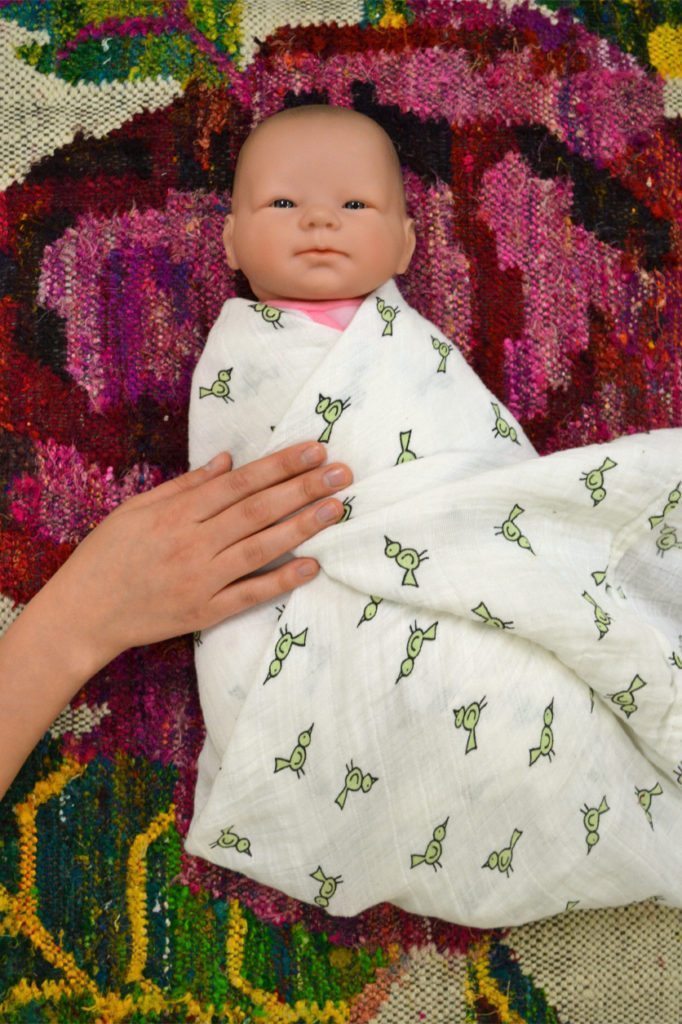
Bring the loose right corner straight out to pull it taut, then pull part of the material down towards the chest. Hold the material there to create almost a V-neck on your baby’s chest.
Finish With a Final Tuck
Then pull the remaining material across your baby’s body and roll him to your right a bit so you can wrap the corner around his back. Next, tuck the remaining fabric inside the fold on the front to secure the swaddle.
Swaddling Safety: Dos and Don’ts for New Parents
- Do place your baby on their back to sleep while swaddled. Sleeping swaddled and on his belly can increase a baby’s risk of SIDS.
- Do use a light cotton blanket that is breathable and not liable to cause overheating.
- Don’t cover your baby’s face. This can lead to overheating or suffocation.
- Don’t wrap too tightly. Swaddling too snuggly could cause your baby to be at risk for overheating, decreased circulation, or overextension of his hips and knees.
More helpful resources:
Swaddling Videos
Want to see swaddling in action? These quick videos share different swaddling techniques and expert-recommended newborn swaddles to try at home.





























